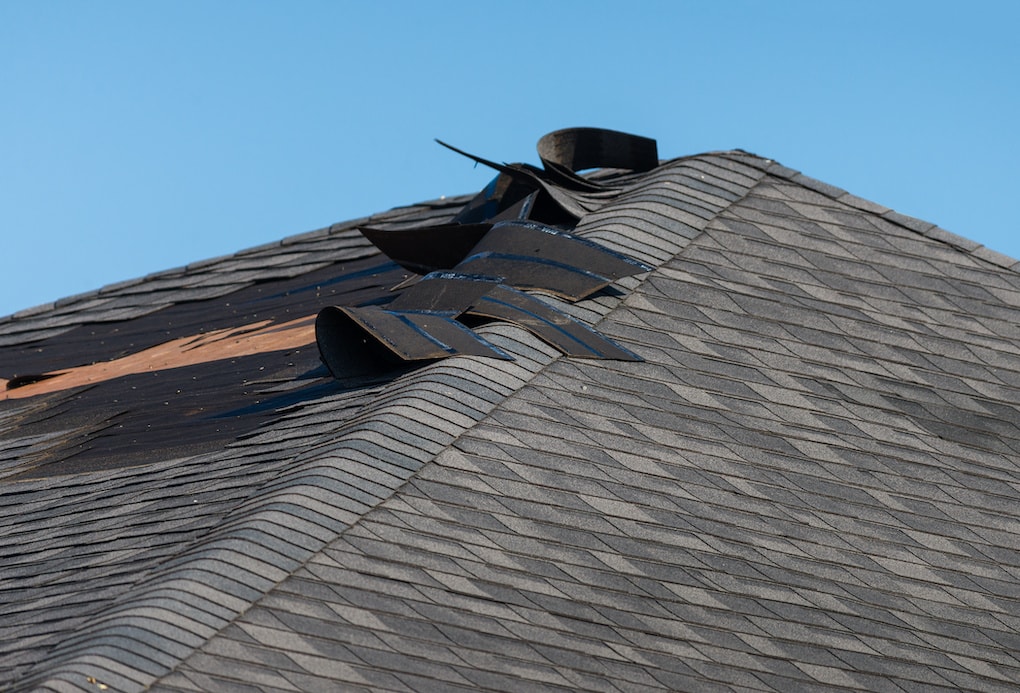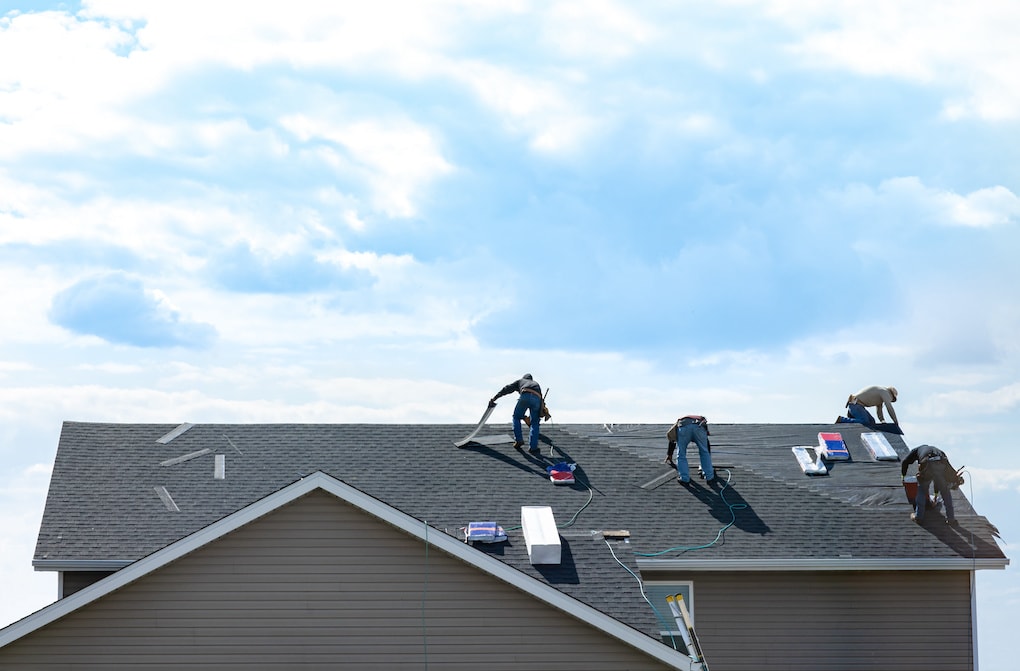Sometimes the need for a roof replacement comes out of nowhere, and without the funds, homeowners are left worrying about how they’re going to pay for their new roof!
With the average cost of a roof replacement sitting between $5,000 and $11,000, that’s a lot of out-of-pocket expenses should you require an immediate roof replacement.
Luckily when it comes to storm damage, insurance may cover a portion of the costs. But either way, you’re paying a lot to get your new roof installed, and without planning ahead, you may be left scrambling for funds.
Fortunately, there are many different ways homeowners can finance their roofs, each with its pros (and cons). We’ll list out some ways that homeowners can get assistance paying for their new roof and how to plan ahead.
How to Pay for Your Roof: Financing Options to Consider
Whether you planned to install a new roof, or it’s something that sprung upon you suddenly, it is a costly endeavor. The good news is that there are many helpful financing options available to offset the costs of a new roof—from personal and home equity loans to homeowner’s insurance claims. Here are some of the best financing options to consider.
1. Filing a Homeowner’s Insurance Claim
If you own a home, you need to have homeowner’s insurance. Homeowner’s insurance covers a lot of things that can happen to a home, including property damage, storm damage, theft, and personal injury liability cases. But most importantly, it can cover your roof should anything happen to it during severe weather.
When the unthinkable happens, and your home is damaged during a storm, one of the first things you’ll do is file a homeowner’s insurance claim. Next, they will do an inspection and determine how much coverage (if any) they will be able to offer you.
In some cases, you may be able to file your homeowner’s insurance claim and have it cover up to 90% of your new roof. If not all 100%, this is still an excellent option for those who need an immediate roof replacement—saving them from out-of-pocket expenses.

Unfortunately, there are limitations to homeowners’ insurance coverage, especially if your roof is old and past its prime. If the damage inspection reveals a lot of damage due to wear and tear, poor workmanship, or old damage, it’s likely those repairs won’t be covered. It’s essential to read your insurance policy thoroughly, so you know what is or isn’t covered and avoid surprises when you need coverage the most.
Also, one downfall of filing a homeowner’s insurance claim is that it can potentially raise your premiums. Something to consider before using your insurance to cover your roof damages is to figure out if the rise in premiums is worth it. If the roof repairs are minor and you can pay out of pocket, maybe save the coverage for when you need the entire roof replaced.
2. Home Improvement Loan
The U.S. Department of Housing and Urban Development offers Title I Property Improvement Loans, which insures private lenders against loss if they make any property improvements. Property improvement loans cover any alterations, repairs, or renovations of:
- homes, including manufactured homes, occupied for at least 90 days
- non-residential purposes
- construction of a new exclusively nonresidential structure
More information on term limits and other regulations can be found here.
3. Home Equity Loan
Home equity loans allow you to borrow against your home to finance loans or coverage you can’t get elsewhere. The available equity of your home is the difference between its market value and your remaining mortgage balance. You won’t want to (or be allowed to) take a home equity loan out if the loan to value ratio is over 85%.
Personal Loan
If the home equity loan isn’t an option for you, you can always take out a personal loan to help pay for your new roof. In addition, personal loans are a great way to get quick financing if you’re in an emergency and need money now.
Personal loans can take as little as two weeks from approval to disbursement, which makes them incredibly helpful for any financial situation that needs immediate attention. Personal loan rates are typically higher than home equity loans or other personal lending options, but the application process is usually much more straightforward.
4. Low APR Credit Card
We don’t usually condone taking out more credit cards than is needed, but if none of the other options are a good fit, or you don’t qualify, consider taking out a low APR credit card. You could use it to cover the cost of your roof if you have no other options. Then, once it’s paid off, just utilize that card for any other house emergencies or repairs.

5. Financing Through the Roofing Company
Many roofing companies partner with financing companies that can offer financing options for their customers. Many of these can offer low rates, with reasonable payment plans and quick approval. You can usually contact your roofing company to determine if they offer financing options or even ask them about their preferred lenders.
6. Savings Plan
And lastly, having a consistent savings plan in place to save up for home emergencies like damage or roof repairs and replacement can save a ton of stress down the road. Having a nest egg is essential to having the funds available whenever you need them if insurance or financing options aren’t available to you.
Other Things to Consider Before Paying for a New Roof
Before you jump into financing a new roof, there are a few things you should ask yourself first.
Does your roof actually need to be replaced?
Just because your roof was damaged doesn’t mean replacement is the only option. Often, repairs will suffice and buy you more time to save up and figure out financing for a new roof down the road. A professional roofer can do a thorough inspection and determine the root cause of the damage, plus what they could repair instead of replacing, especially if your roof is in otherwise good shape.
Will a new roof add a lot of value to my home?
People looking to sell their homes will sometimes consider replacing the roof beforehand to increase their home’s value, thus selling it for more. But sometimes, the cost of the new roof compared to how much it will increase the selling price may not be quite the drastic change you think. Talk with your realtor or a local appraiser before deciding to replace the roof. If it’s in good condition, and a new one won’t add a ton of value, consider putting off that roof replacement.

How severe are the damages or roof issues?
If your roof sustained damage, how detrimental is it to the function or safety of your home? Is it an option to temporarily repair the damages to buy time until you get funds in order? Cover all your bases but be sure that you don’t put off repairs for too long.
Paying for a roofing project may appear daunting at first, especially when you consider the full cost of the work. However, the plethora of alternatives listed above make your roof repair or replacement more affordable and obtainable.

If you need immediate roof repairs or replacement, let the team at Apple Roofing help you. We can discuss in detail your needs, wants, and next steps.
We can then inspect your roof and give you an accurate estimate that you can use to determine how to finance your roof.
Reach out to us if you ever have questions or concerns about how to afford your new roof! We’re here to help.

